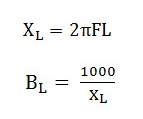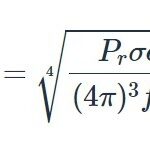What Are the Nodes in LTE Architecture?
Let me explain to you the different nodes in the LTE architecture. These nodes play key roles in ensuring that LTE (Long-Term Evolution) provides high-speed, reliable, and efficient mobile broadband services. Each node has a specific function in terms of controlling, routing, and managing data traffic between your device (UE) and the broader internet.
In LTE, the architecture is divided into three main parts: the User Equipment (UE), the Evolved UMTS Terrestrial Radio Access Network (E-UTRAN), and the Evolved Packet Core (EPC). Within each part, there are specific nodes responsible for different tasks. Here’s a breakdown of the key nodes you need to know.
1. User Equipment (UE)
The User Equipment (UE) is your device — like your smartphone or tablet. It connects to the LTE network and communicates with other nodes to send and receive data, voice, and text messages. The UE has basic functions like performing measurements, handovers, and transmitting and receiving data using the radio access network.
2. Evolved UMTS Terrestrial Radio Access Network (E-UTRAN)
E-UTRAN is responsible for providing the radio connection between the UE and the core network (EPC). It handles all things related to radio access and is made up of the following key nodes:
- eNodeB (Evolved Node B): The eNodeB is the main base station in LTE. It handles radio communication, scheduling, and managing the connection between the UE and the EPC. It’s responsible for functions like handovers, scheduling user data, and controlling the radio resources.
3. Evolved Packet Core (EPC)
The EPC is the core network in LTE, and it’s made up of several nodes that provide routing, policy management, and overall control of data traffic. The key nodes in EPC are:
- MME (Mobility Management Entity): The MME is responsible for managing mobility, handling the initial connection setup, security, and tracking of the UE’s location. It also controls the handover process and manages the signaling between the UE and the core network.
- SGW (Serving Gateway): The SGW acts as a relay for data between the eNodeB and the Packet Data Network Gateway (P-GW). It also handles user plane data routing, including forwarding data packets between the UE and the external network.
- PGW (Packet Data Network Gateway): The P-GW is responsible for providing internet connectivity and routing data to and from external IP networks like the internet. It also manages IP address allocation for the UE and performs traffic filtering.
- HSS (Home Subscriber Server): The HSS is a central database that contains subscription information, authentication details, and user profiles. It’s essential for managing user authentication and authorizing services.
- PCRF (Policy and Charging Rules Function): The PCRF determines the quality of service (QoS) and applies the rules for charging, ensuring that the correct amount of bandwidth is allocated based on the user’s subscription plan.
Summary of LTE Nodes
| Node | Function |
|---|---|
| UE | Your device (smartphone, tablet) that connects to the network |
| eNodeB | Handles radio communication, scheduling, and managing the connection between UE and EPC |
| MME | Manages mobility, connection setup, and security signaling |
| SGW | Relays user data between eNodeB and P-GW |
| PGW | Provides internet connectivity and routes data between external networks and the UE |
| HSS | Stores subscriber data and user profiles for authentication |
| PCRF | Manages QoS and charging rules for the network |
These nodes work together to deliver seamless LTE service, handling everything from radio communication to data routing and subscriber management. The network’s efficiency depends on how well each node performs its role. Together, they form a robust system that provides high-speed data, voice, and video services to users across the globe.


